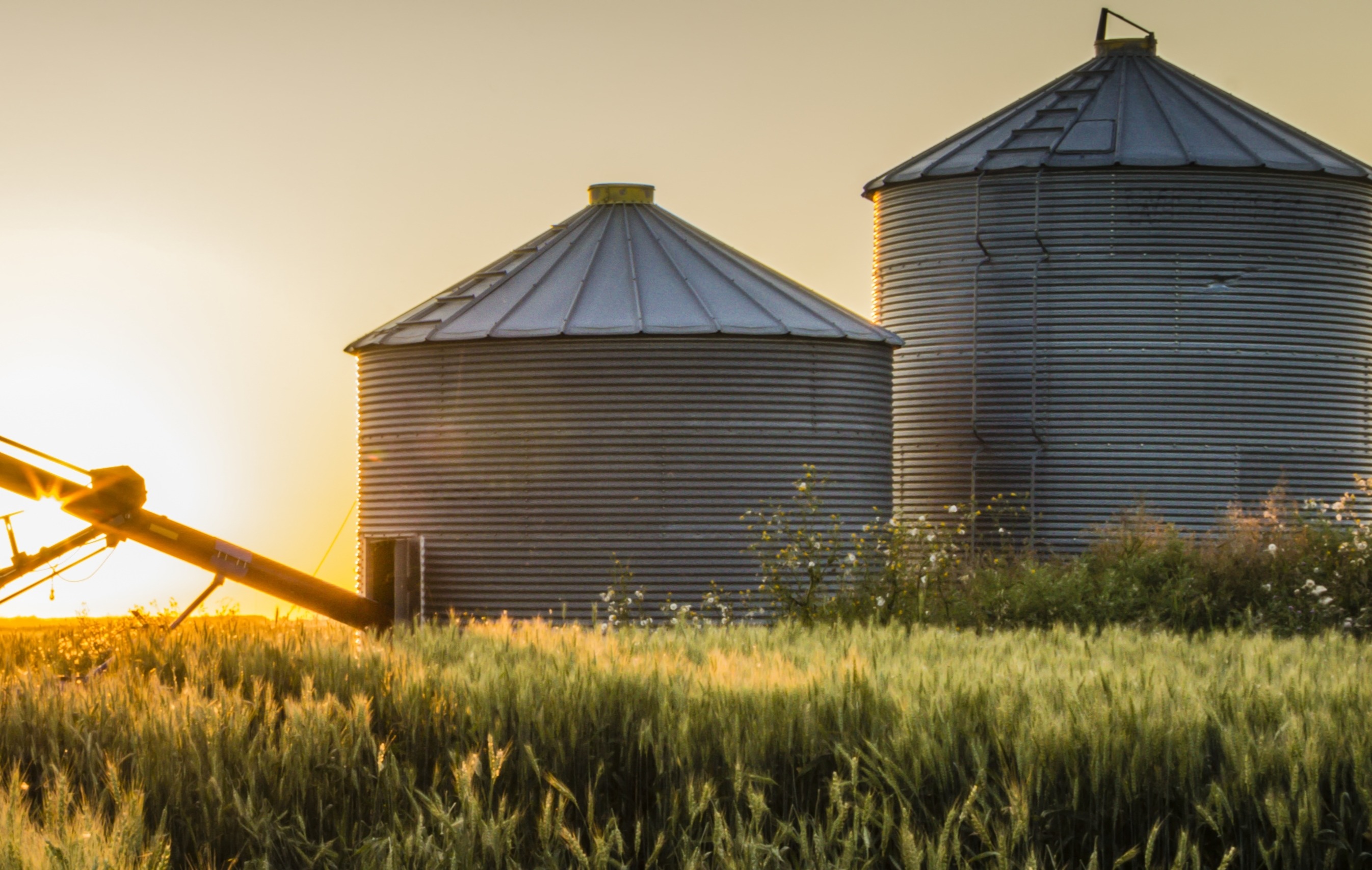
Grain Bin Safety: Plan, Prepare, and Save Lives

During harvest time, most farmers run on adrenaline. Weather sometimes leaves a narrow window for getting the crops in before wind or a storm wipes them out. There's the excitement of soon having some cash, or at least paying off the bank, and there is the frustration of combines and harvesters that break down, hired help who don't show, and working days that extend into the middle of the night. And as Grain Bin Safety Week reminds us, there are life-threatening consequences to taking shortcuts and ignoring precautions that, with some extra effort, can be easily prevented.
Harvest is hectic, and farmers can work too fast, skip breaks they need, and forget the safety steps that prevent tragedies at the grain bin. Over the past 50 years, more than 900 cases of grain engulfment have been reported in the U.S., with a fatality rate of 62 percent. In 2019, there were 38 documented grain entrapment cases, representing a 26.7% increase over 2018.
The most tragic fact of all is that grain engulfments are highly preventable.
The Hazard
Moving grain is like quicksand. A worker can be trapped up to the knees in under five seconds. By the time a worker is trapped up to the waist, it takes 600 pounds plus the worker's body weight to pull that worker free. In the 20 seconds it takes for grain to come up to a worker's neck, breathing becomes impossible even if the worker's head is above the grain because the diaphragm can't move against the weight of the grain. Very few people survive total engulfment.
All over the Midwest, grain entrapment accidents are on the increase while other kinds of farm accidents are not. Most of the victims of grain engulfment are under the age of 17 or over the age of 55.
We can speculate that inexperience and excessive confidence contribute to the higher frequency of grain engulfment accidents among the youngest and oldest farmers. But no matter what the age of the victim, every death from grain engulfment is preventable.
Three Common Scenarios for Grain Engulfment
Modern grain farming presents new engulfment risks. Equipment runs faster than ever. Bins are larger than ever. Harvests are bigger than ever. Farmers have ever-increasing sophistication about the markets and are holding their crops longer than ever before.
There are three common scenarios that lead to tragic grain engulfments. One is being inside a grain silo when unloading equipment is switched on. Another is a bridge of spoiled grain on the surface of the silo that looks stable but isn't. The third is getting trapped while dislodging a vertical wall of spoiled grain.
1. Entrapment by active grain flow
The overwhelming majority, maybe 80% of grain entrapments occur in active grain flow. As the auger pulls grain out of the bottom of the silo, anyone on the top of the grain gets sucked down in the funnel of grain.
It's important for every worker who goes into a grain bin to keep these two facts in mind: A grain bin may hold 30,000 bushels. You weigh two or three bushels. You don't have to sink very far to be crushed by the weight of the grain around you.
Operating a grain vacuum can also lead to entrapment. Workers who don't have the physical strength to control the vacuum can trigger an avalanche of grain that engulfs them.
2. Spoiled grain bridge
Every farmer knows that spoiled grain stinks. It emits gases. What this means in the case of a bridge of spoiled grain at the top of a grain bin is that a pocket of gases can be trapped beneath the bridge. A worker steps onto what looks like a solid spoiled grain and falls into the cavity of trapped gases beneath it, triggering the escape of the gas and the collapse of the grain around it. Even worse, the edges of the air pocket may be filled with heavy chunks of spoiled grain that cause crushing injuries in addition to engulfment.
3. Vertical grain avalanche
Spoiled grain can get stuck to the side of a silo. Removing the spoiled grain can cause chunks of rotten grain to fall down on the worker, resulting in crushing injuries, and triggering an engulfing avalanche of spoiled and fresh grain.
This video, from Dan Neenan, Director of The National Education Center for Agricultural Safety shares important safety practices to help avoid grain bin injuries.
Take the time to stay safe!
At Winter-Dent, we recommend all of our insured farmers with grain bins and silos take a look at the grain bin safety rules. We suggest that you study them and print out a copy for everyone in your operation who works in or near bins or silos. We'll summarize the rules for you here:
- Use a grain bin entry permit...every person every time.
- Train all workers on safe entry procedures and to be able to recognize hazards and risks.
- Turn off and lock out all equipment.
- Test bin atmosphere for toxic gases and oxygen levels.
- NEVER walk down grain.
- Wear a body harness, attached to a lifeline, and secured to a fixed anchor point.
- Buddy up! Always have at least one person stationed outside who can both see and hear you.
We also have a few words about good farming practices that prevent grain bin tragedies. Put only quality grain into storage. If it's not dry, don't store it. Core the grain to improve airflow. Have moisture and temperature sensors in every bin for early detection of potential problems. Make sure your local fire department has rescue tubes.
Winter-Dent is here to insure every aspect of your farm. But more than that, we are here to help you reduce risks to improve both your bottom line and ours.

